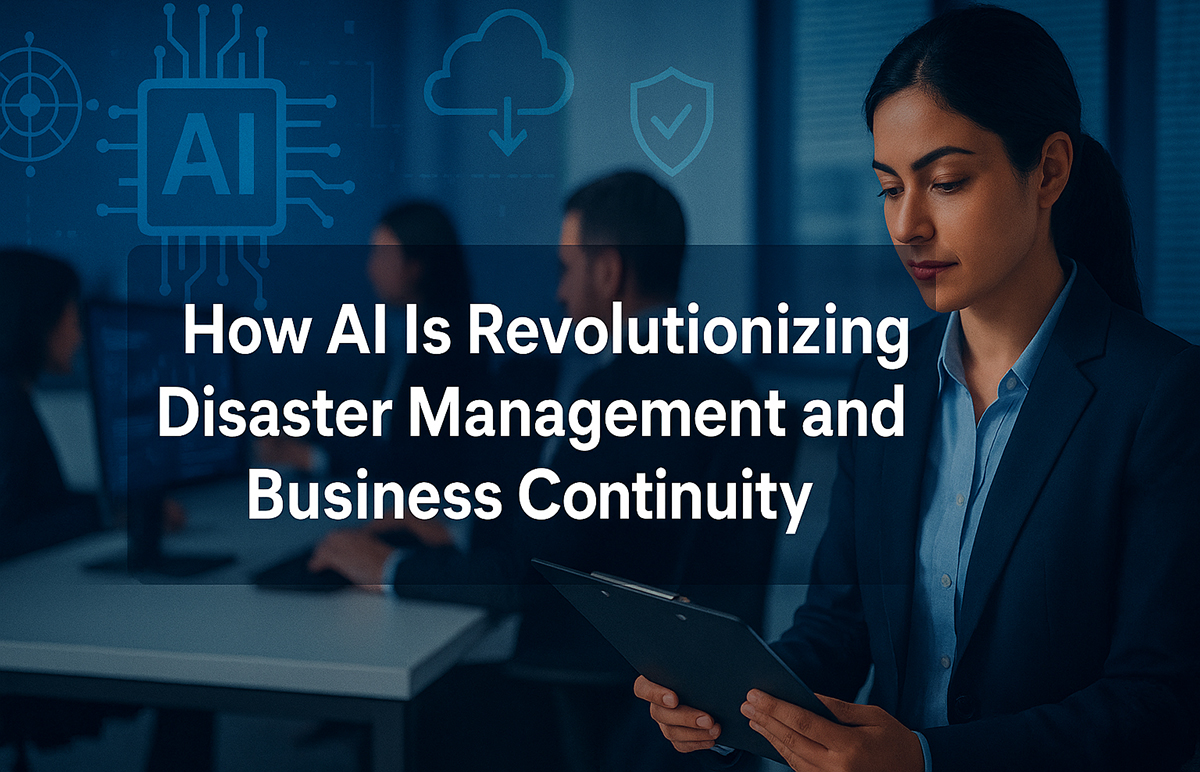No products in the cart.
 A New Era in Crisis Response
A New Era in Crisis Response
In today’s unpredictable business landscape—marked by natural disasters, pandemics, cyberattacks, and political unrest—traditional crisis response methods are no longer enough. Artificial Intelligence (AI) is transforming resilience strategies by predicting and navigating disruptions with unmatched agility. From preparation to recovery, AI empowers businesses to respond smarter and bounce back faster.
AI in Crisis Situations: Speed Meets Intelligence
Fueled by vast data streams—from weather systems and IoT sensors to social media—AI can detect emerging threats in real time. It enables early action, whether identifying the onset of a wildfire or unusual network behavior. Over time, AI adapts and refines its insights, providing increasingly accurate predictions and enhancing organizational preparedness.
Predictive Analytics: Anticipating the Unpredictable
AI leverages predictive analytics to turn historical trends and live data into actionable early warnings. For example, by analyzing rainfall and soil conditions, it can anticipate flood risks, while stress sensors may hint at impending infrastructure failures. In digital environments, AI detects behavioral anomalies that could indicate a breach in progress. This level of foresight allows businesses to shift from reactive responses to preventive, strategic action.
Real-Time Monitoring and Early Alerts
In disaster response, every second matters. AI-powered systems analyze inputs from drones, sensors, and satellites to deliver instant, prioritized alerts. By contextualizing these warnings, teams can quickly identify and act on the most critical threats—be it a gas leak, power fluctuation, or structural instability—ensuring faster, more accurate decisions under pressure.
AI Chatbots for Crisis Communication
Effective communication is vital in any emergency. AI chatbots support this need by instantly distributing accurate updates to employees, first responders, and the public. They can assist with evacuation guidance, provide real-time supply updates, and respond to urgent queries—all while running around the clock to maintain steady information flow when human resources are stretched thin.
Streamlining Emergency Logistics
Even during crisis-induced disruptions, AI plays a key role in optimizing logistics. It assesses traffic conditions, resource levels, and workforce availability to recommend efficient deployment strategies. With the ability to pinpoint delays and adjust routes in real time, AI helps streamline aid distribution—an essential capability for maintaining continuity in complex global supply chains.
AI in Cyber Disaster Recovery
In the fast-paced world of digital operations, AI acts as a frontline responder. It identifies anomalies, contains threats, and initiates automated recovery processes such as backups or failovers. By reconstructing breach timelines and pinpointing vulnerabilities, AI not only limits the impact but also speeds up recovery—minimizing downtime and restoring business continuity quickly.
Business Continuity Planning with AI
Traditional static plans no longer suffice in today’s dynamic risk landscape. AI empowers organizations with adaptive continuity strategies that respond to real-time data shifts. It can reassign workloads when staffing levels drop or redirect operations away from compromised facilities. Through scenario simulation, AI ensures businesses remain prepared for a wide range of disruptions.
AI-Driven Risk Modeling and Resilience Planning
AI transforms the way organizations assess and rank risks by simulating complex scenarios like pandemics, cyberattacks, and supply chain failures. These models generate actionable insights while helping leaders identify weak points and strengthen their systems through strategic stress testing. The result is a more resilient and well-prepared operational framework.
Case Studies: AI in Real-World Crises
The COVID-19 pandemic highlighted AI’s real-world impact, from forecasting ICU demand to streamlining ventilator allocation in hospitals. In Japan, advanced AI systems have shortened tsunami evacuation times through faster detection. Businesses also turned to AI—one global bank leveraged it to manage remote workforce shifts during a ransomware attack, while a pharmaceutical firm used simulations to safeguard its vaccine cold-chain logistics.
Ethical Boundaries and Limitations
Despite its capabilities, AI comes with limitations. Flawed training data can introduce bias, and excessive reliance on automation may dull human decision-making. When tracking behavior or movement, AI also raises significant privacy concerns. To ensure its reliability in critical situations, organizations must prioritize transparency, ethical design, and vigilant human oversight.
Looking Ahead: The Future of AI in Resilience
As AI evolves, disaster response becomes increasingly agile. Generative models can anticipate novel crisis scenarios, while quantum computing accelerates the analysis of intricate events. In hazardous areas, robotics can take over where human access is limited. Together, these innovations shorten response time and enhance decision-making—elevating crisis management from survival to strategic mastery.
Conclusion: The Backbone of Modern Resilience
AI is not just a tool—it’s the foundation of modern disaster management and business continuity. It equips organizations with the speed, foresight, and intelligence to tackle crises head-on. In an era where disruption is inevitable, those who embrace AI-driven resilience will not only survive but emerge stronger, more agile, and future-ready.
Stay updated! Follow us on social media! Facebook, Twitter, LinkedIn
Check out our newest blog entry (How Veeam V13 Transforms Data Security)
Subscribe to get free blog content to your Inbox



 A New Era in Crisis Response
A New Era in Crisis Response